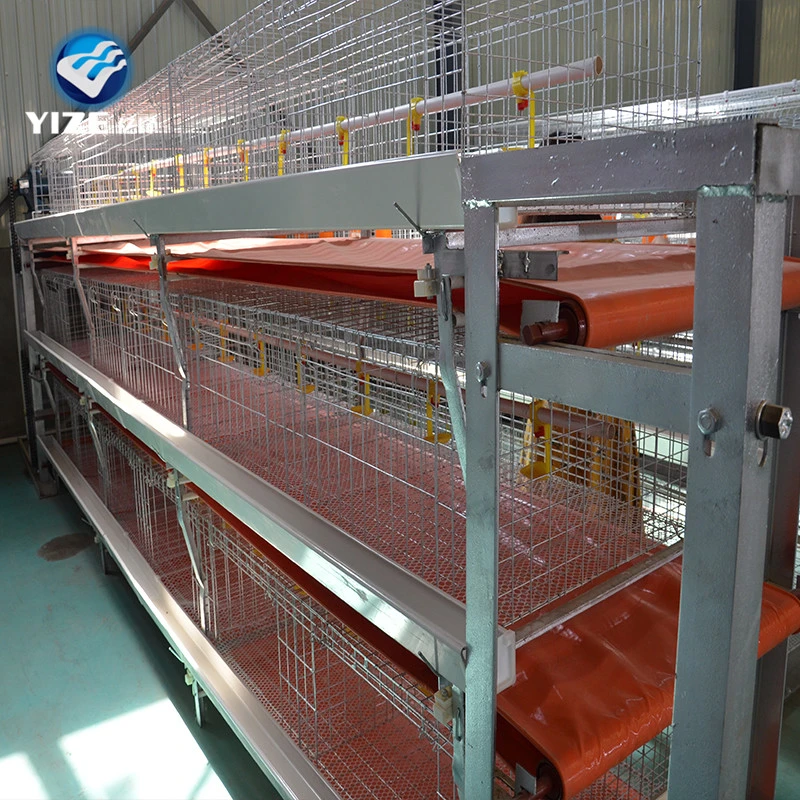Poultry Housing Solutions and Innovations in China for Improved Farming Efficiency
Dec . 14, 2024 23:34 Back to list
Poultry Housing Solutions and Innovations in China for Improved Farming Efficiency
The State of Poultry Cages in China Innovations and Industry Trends
In recent years, the poultry industry in China has experienced substantial growth, driven by increased domestic demand for poultry products, including chicken, duck, and eggs. To meet this demand, the industry has made significant investments in the modernization of production facilities, particularly in the area of poultry housing. One of the pivotal components of this modernization effort is the use of poultry cages, which have undergone remarkable innovation and development.
Evolution of Poultry Cages
Historically, poultry farming in China relied heavily on traditional methods, which often included free-range systems. However, as the demand for poultry products surged, farmers needed more efficient and productive systems. Thus, the transition to cage-based systems began, initially employing basic designs. Over time, those designs evolved into more sophisticated and humane options, thanks in large part to technological advancements and increased awareness of animal welfare.
Modern poultry cages in China are now designed to optimize space while also maintaining the health and well-being of the birds. These advancements include features such as adjustable ventilation systems, improved feeding systems, and better waste management solutions. A prime example of this evolution is the move towards enriched cages, which provide hens with more space to move around, nest, and engage in natural behaviors, contrary to the traditional battery cage systems that have faced criticism globally.
Technological Innovation
The integration of technology in poultry cage design has propelled the industry forward. Smart farming technologies, including the Internet of Things (IoT), allow poultry farmers to monitor their flocks more efficiently. Sensors can track temperature, humidity, feed consumption, and bird health, providing farmers with data to make informed decisions. These innovations not only improve productivity but also contribute to the sustainability of poultry farming operations.
Moreover, automation has become a key trend in modern poultry farming. Automated feeding systems, egg collection technologies, and waste management systems reduce the labor burden on farmers while improving efficiency. This is particularly important in a country like China, where labor costs are rising, and the workforce is shrinking.
poultry cages china

Environmental Concerns and Regulations
As the poultry industry scales, environmental concerns have come to the forefront, prompting the Chinese government to impose stricter regulations on waste management and emissions. Modern poultry cages are being designed with these regulations in mind, incorporating eco-friendly technologies that minimize environmental impact. For instance, some farms are investing in systems that convert poultry waste into biogas, which can be used as a renewable energy source.
Furthermore, there is a growing emphasis on sustainability within the poultry farming community, with many producers seeking certification from organizations that recognize environmentally friendly and humane practices. This shift not only aligns with government regulations but also meets the increasing consumer demand for ethically sourced poultry products.
Market Trends and Future Outlook
The market for poultry cages in China is expected to continue expanding as production techniques evolve and consumer preferences shift toward higher welfare standards. Industry projections indicate that the demand for automated and smart poultry housing will grow significantly, leading to more investments in research and development.
Additionally, as international trade dynamics change, China is positioning itself as a leading exporter of poultry products. This trend will likely drive advancements in cage technology to ensure that Chinese poultry products meet global standards and compete effectively on the international stage.
In conclusion, the poultry cage industry in China is at a pivotal moment, marked by technological innovation, heightened awareness of animal welfare, and a commitment to sustainability. As farmers adapt to meet the demands of an evolving market, the future of poultry farming in China looks promising, offering opportunities for enhanced productivity, environmental stewardship, and improved animal welfare. The continued evolution of poultry cages will play a crucial role in shaping this vibrant industry in the years to come.
-
Hot Sale 24 & 18 Door Rabbit Cages - Premium Breeding Solutions
NewsJul.25,2025
-
Automatic Feeding Line System Pan Feeder Nipple Drinker - Anping County Yize Metal Products Co., Ltd.
NewsJul.21,2025
-
Automatic Feeding Line System Pan Feeder Nipple Drinker - Anping County Yize Metal Products Co., Ltd.
NewsJul.21,2025
-
Automatic Feeding Line System - Anping Yize | Precision & Nipple
NewsJul.21,2025
-
Automatic Feeding Line System - Anping Yize | Precision & Nipple
NewsJul.21,2025
-
Automatic Feeding Line System-Anping County Yize Metal Products Co., Ltd.|Efficient Feed Distribution&Customized Animal Farming Solutions
NewsJul.21,2025






